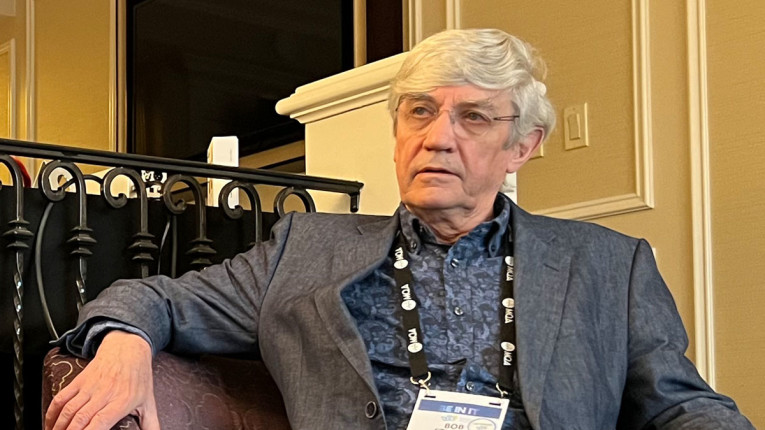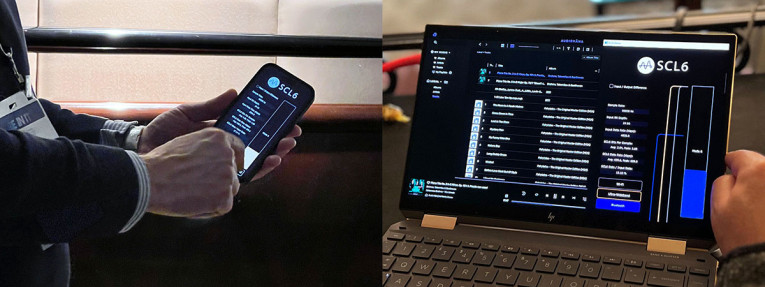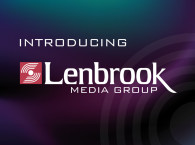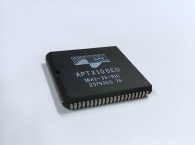I'm getting used to visceral reactions that any reference to the name MQA generates, independently of what we're talking about. We've seen those reactions happening when the new SCL6 scalable codec was officially announced as MQair back in November 2022, a strategy that apparently the company has decided to retrieve to avoid any confusion with the original MQA system solution.
Essentially, the SCL6 codec shares many technology fundamentals with MQA, including its focus on time domain analysis of the signal, which effectively increases our perception of "high-resolution sound." Those techniques are combined with a new architecture optimized for wireless transmission - the scalable aspect of this codec. As stated, this is a completely new codec, that could perfectly extend MQA sources from wired to wireless. But fundamentally, it works with any source signal and doesn't include the secret "Master Quality Authenticated" file encoding.

The demonstration we attended at CES 2023 was extremely effective - the hallmark in everything that Bob Stuart is involved. It focused on the direct comparison of source material, uncompressed, high-resolution audio, available in a wav file (played from a REAPER DAW) and common formats available, from CD-quality, to MP3, and AAC, or MQA from Tidal, under the different data rates as we have available today, to show how effectively the SCL6 packaging worked in comparison.
To do this, Andy Dowell (Head of Licensing at MQA), and Bob Stuart (MQA founder and CTO) allowed us to use an app (on a smartphone or a laptop controlling Audirvana as the player), which shows a "quality mode" slider that effectively determines the data rate. Not only could we select the music source, but we could switch seamlessly between the different "modes," with hardly any audible difference. Because it is scalable, SCL6 can potentially be implemented to be truly adaptive to underlying conditions - meaning it can increase or reduce the bit rate in real time.
For those not familiar with the impact of lossy audio compression on the music, Bob Stuart showed us several critical tracks before and after, followed by the null residual (subtracting the encoded from the original information). Extremely impressive to hear how bad an MP3 file at 256kbps actually is, same as OggVorbis, and how critical information is still being removed from even higher quality codecs, such as AAC - even though 98% of listeners wouldn't be able to tell the difference in standard A/B listening tests. The same can be said for sliding the SCL6 modes in the demonstration app, from maximum quality to lower than 500kbps, which in subjective listening doesn't reveal any audible differences. An impression dramatically confirmed when listening to the null residual of the SCL6 encoding, which is almost silence.

Some British publications recently revisited the SCL6 announcement when MQA promoted dedicated demonstrations at its headquarters - basically similar to the ones we experienced at CES 2023, just in a better room, with different speakers. But that's about as much attention as the technology has generated so far. Still, I recommend reading the two articles in What Hi-Fi, by Andy Madden and Ketan Bharadia, which made a good job of summing up the essential parts of the demonstrations from an honest and realistic perspective (note: apologies for directing our readers to What Hi-Fi because of the intrusive Google ads that appear on their website).

Consciously, I also avoid going back to discuss MQA, a technology that I continue to believe was well-intentioned and answered a direct request from the recording industry - as Bob Stuart (founder of both Meridian Audio and MQA) recently reaffirmed in our conversation at CES 2023. MQA responded to the key issue of creating better digital masters from the many recordings of the early CDs, when analog-to-digital converters were still in their infancy and yet remained in use far too long (over a decade in most cases). And subsequently, record companies wanted a way to "authenticate" those remastered files to distinguish them from the garbage that unfortunately was already stored in many streaming libraries.
That is the reason why, when Universal Music Group (UMG) announced in February 2017 that it would be selling songs in MQA format, Michael Nash (Executive Vice President of Digital Strategy at UMG) stated "With MQA, we are working with a partner whose technology is among the best solutions for streaming Hi-Res Audio, and one that doesn't ask music fans to compromise on sound quality for convenience."
Yes, it's a royalty-based proposition that generated the revenue required to sustain the evangelization efforts these things require - and that wasn't a task to be taken lightly - and that's what still motivates my respect.
I still believe the way MQA was implemented, the whole secrecy of the studio mastering process and encoding was not transparent, and that was what originated a strong backlash. But everything else that followed - including the "technical discussions" and "debunking" of MQA in forums - was generated mostly by the same people who still didn't move from MP3, think that AAC is "the same thing" or is "an Apple codec," and that vinyl is still the best music source. And anyway, wireless was never a part of their concerns.
In most cases, the people who refuse to look at any "codec" alternative, are often the same ones who refuse to accept the need for data compression in the first place, because they still live in the world of cables - sometimes very expensive cables of very questionable merits. Others, simply have vested commercial interests themselves, confuse lossless with uncompressed, or prefer to promote the abstract merits of lossless compression without any concern for the reality of streaming distribution and transmission technologies (or commercial product viability for that matter). And because they believe lossless has killed that debate, they will be happy to ignore the fact that the vast majority of the global population will transition from SBC to LC3 over Bluetooth, as their "best" option. ("Let them listen to vinyl" I hear these Marie Antoinettes cry out).

Anyone who has been involved with digital links for broadcast, and has seen the evolution of Adaptive Differential Pulse-Code Modulation (ADPCM) originally developed for speech coding at Bell Labs, knows how multiple ADPCM-based codecs and bitrate reduction implementations have had a positive effect on our audio sources, on all forms of broadcast radio and television, cinema sound to home cinema, and even studio recording where aptX has been used for decades to connect sessions between remote locations.
The new SCL6 codec uses time-domain ADPCM and bitrate reduction and since it can be implemented in software, it can be implemented in the hardware that is currently being planned for new products, including existing chips - meaning a firmware update could introduce SCL6 as an additional option to existing products. The motivation for manufacturers would be to create a seamless extension of high-resolution audio sources in wireless transmission. And that is precisely why the Japan Audio Society (JAS) audio research organization, has decided to certify the new SCL6 scalable codec for use with its Hi-Res Audio Wireless logo (together with LC3plus from Fraunhofer IIS).

In that regard, the new SCL6 codec, because of its "scalable" architecture, can be seen as a possible candidate for hi-res audio over Bluetooth wireless, surpassing what until now was possible with Sony's LDAC (that also uses ADPCM), or with Qualcomm's aptX Adaptive, which simply recognizes the source content and allows switching between using low-latency aptX, aptX, or aptX HD to support 24-bit/48kHz with bit-error resilience for wireless Bluetooth using bitrate reduction. Later Qualcomm introduced aptX Lossless, but that only delivers CD-quality 16-bit/44.1kHz "losslessly" over Bluetooth.
The new SCL6 scalable codec meets two essential applications goals in the current market environment. First, it allows streaming of high-resolution audio source material (24-bit/48kHz and higher) independently of the wireless transmission bandwidth. This is something that not even Apple Music lossless streaming (using ALAC) supports - even though the files Apple stored have been delivered by authors in hi-res, and are stored in hi-res. The entire Apple Music catalog is encoded using ALAC in resolutions ranging from 16-bit/44.1kHz for older originals, up to 24-bit/192 kHz for modern masters. Lossless music via ALAC theoretically supports up to 24-bit/192kHz.
ALAC is now open source and royalty free and supports up to eight channels up to 32-bit/384 kHz, but when used for Apple's streaming services, it faces the same constraints that all the other services using other options (including FLAC) face. Lossless streaming quality is normally restricted to 24-bit/48kHz maximum, with Hi-Res Lossless (up to 24-bit/192kHz) only available under ideal conditions. When the user reverts to using Bluetooth from its device, Apple Music converts the streaming to the standard AAC codec.

The recognition that an alternative higher quality codec is needed for wireless audio streaming over Bluetooth is recognized by all the major technology companies, including Apple and Qualcomm, and obviously led by audio manufacturers and large consumer electronics companies. And greater data transfer performance would also be welcome, evidently. In a recent statement published in the Bluetooth SIG blog Masahiko Seki, Wireless Technical Manager at Sony and member of the LE Audio working group, reminded us that LE Audio supports the LE High-Quality Audio profile, written to replace A2DP (Advanced Audio Distribution Profile). Associated with the Higher Data Throughput enhancements being worked out to be added to the Bluetooth Core Specification, this could pave the way for the companies involved in the Bluetooth consortium to eliminate the need for eventually competitive technologies.
And I would love to expand upon this article to discuss the perspectives for UWB on wireless audio applications - which have a very small chance of gaining industry support in all the large volume applications. Will there be a use case for UWB wireless audio, as a sort of mobile extension of Wi-Fi only for hardcore music enthusiasts and "audiophiles"? That needs to remain a topic for a future editorial (thoughts and contributions on this topic are welcome to my email).

The codec benefits from the "natural" ADPCM error resilience and encodes small blocks of audio combined with special techniques for the non-ADPCM parts. It is being offered by a company aptly named Audio Codecs, managed by Jonny McClintock (of APT, CSR, and Qualcomm fame) in association with familiar names Peter Craven and Malcom Law.
As I noted in my original post about Skylark, both Peter Craven and Malcom Law are part of the Oxford University history of data compression, expanded in their work with a company called Algol Applications, which was what led to the development of Adaptive Differential Pulse-Code Modulation (ADPCM) technology and aptX. Both have a long history in audio innovations.
In 1996, Malcolm and Peter started work with Bob Stuart on Lossless Data Compression, resulting in the MLP lossless compression system (rebranded as Dolby TrueHD) and subsequently applied on MQA. Peter and Malcolm believe basing an audio codec around a large time-to-frequency transformation is a strategic mistake so they have never gotten involved with the mainstream audio codecs. Yet, they have improved the original 80s aptX codec to become the 16- and 24-bit versions that became the benchmark for audio quality over Bluetooth. Skylark was in fact originally offered as part of the aptX family of codecs and was even presented briefly by Qualcomm as aptX Live. Now, it might be the foundational technology for new emerging applications in a more mature digital world.
I cannot help to think that the new SCL6 scalable codec could likewise deliver the solution for wireless music listening in markets that are willing to pay extra to not sacrifice quality - as it already happens with other codecs. aX
This article was originally published in The Audio Voice newsletter, (#414), March 16, 2023.







